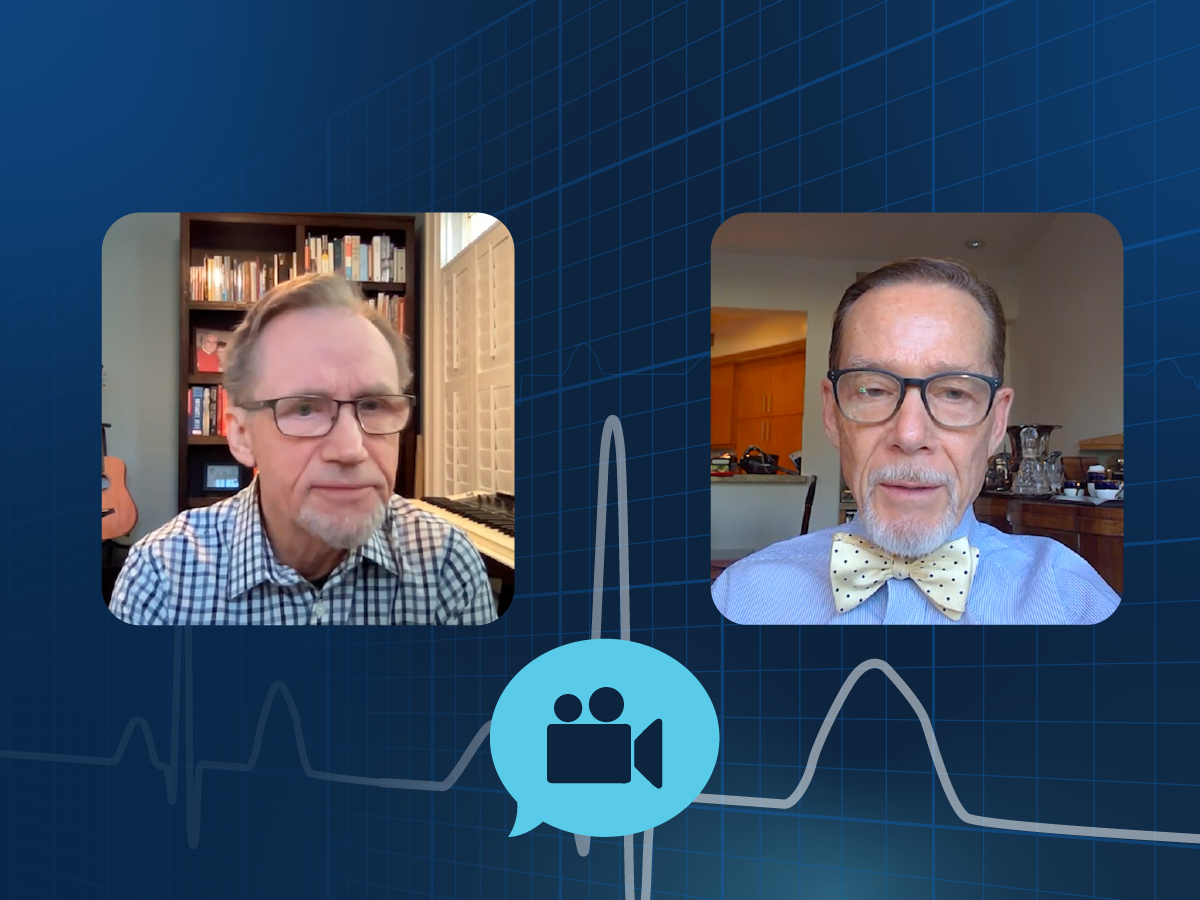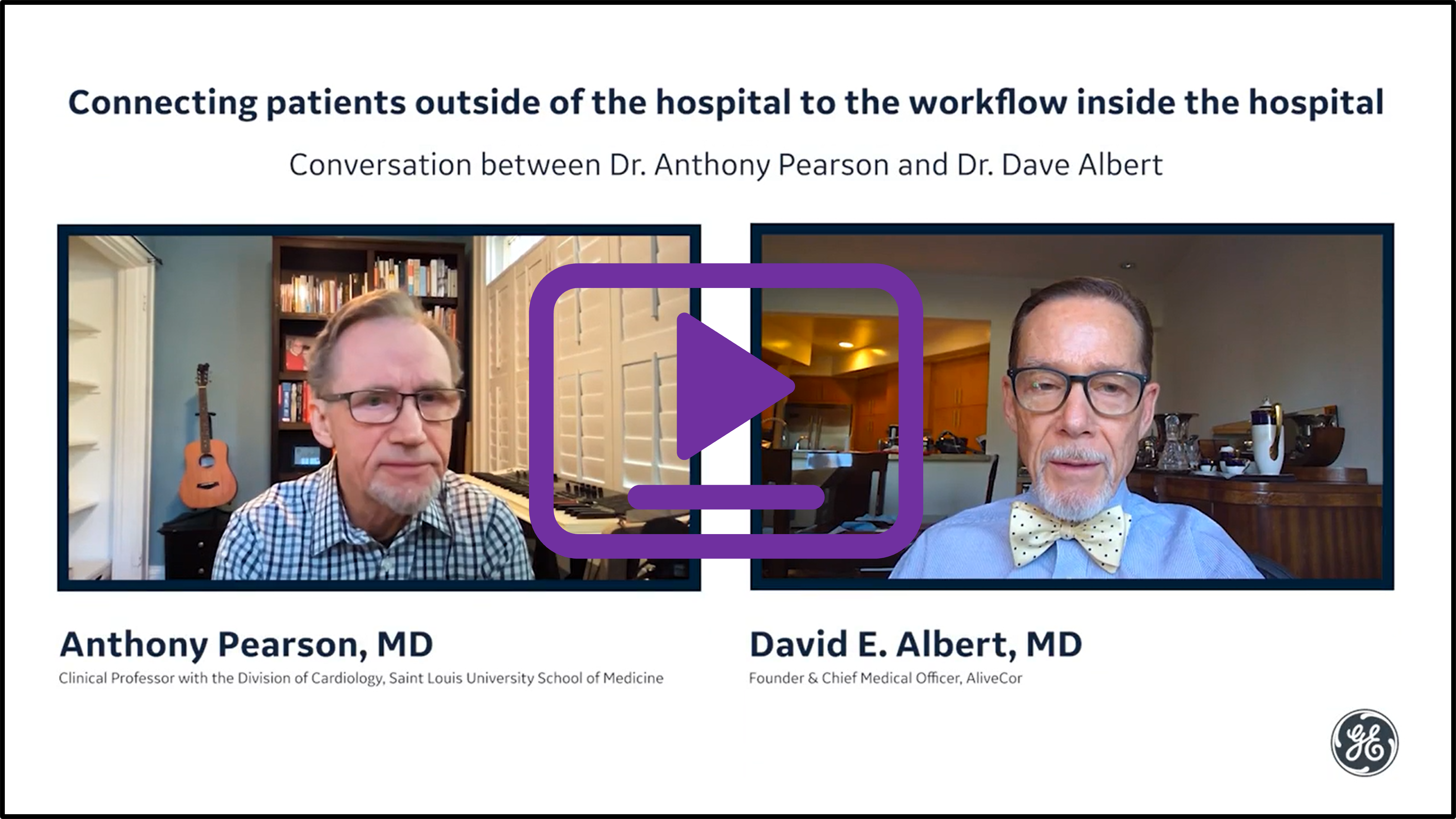Read along...
Dr. Pearson:
Hello, Dr. Albert. It's good to talk to you today.
Dr. Albert:
Thank you, Dr. Pearson. It's a pleasure.
Dr. Pearson:
I am very familiar with your AliveCor Kardia (Mobile) device, and use it in a lot of patients. I've read thousands of EKGs (EKG and ECG are used interchangeably through the dialogue) using the GE MUSE system, but I hear that they've been integrated. Can you tell me something about that?
Dr. Albert:
Yeah. It's all about connecting patients outside of the hospital to the workflow inside the hospital. We're now brought into the workflow of ECG overreads and reports into the EMR. It's very exciting for us because it brings us from the street into the building.
Dr. Pearson:
Excellent. So this means as a physician, I can access the ECG wherever I want?
Dr. Albert:
It's actually kind of seamless. When a patient records an ECG, it will automatically be uploaded. When you go to review your 12-lead ECGs or any of the ECG data in MUSE, the Kardia (Mobile) recording will be there. You can over read it, confirm it, and that will then be uploaded back into the electronic medical record, all in a seamless, end-to-end integration into your existing workflow.
You won't need to do anything outside of what you do today, in terms of ordering and reviewing ECGs when it comes to those recorded outside the hospital.
Dr. Pearson:
Well, that's very exciting because right now, I have patients who are uploading their ECGs from Kardia (Mobile) into the electronic medical record by MyChart or similar methods. I love it when you call it seamless, because currently, it's not seamless. I think that that has slowed uptake of the device, which is just a wonderful way of managing patients as outpatients with atrial fibrillation, so that they don't have to go to emergency rooms and don't have to come into the clinic or the hospital. As the more seamlessly we can make that process, I think the more physicians are going to take it up and utilize it, and the better off patients will be.
Dr. Albert:
Well, that's exactly right. We saw that we operated outside the system and outside the workflow. In today's world, when everyone's under tremendous time pressure emerging from the pandemic, and patients still reticent the ability to have a seamless workflow. That to us was the goal.
This makes it seamless. They don't have to do anything. That's relief. As you know, the more you ask your patients to do, the less likely sometimes it is that they do it. If we can monitor that ...
Dr. Pearson:
Yeah, hard for a lot of them to do that. Yeah. I can't wait to start using that in my own practice. I'm looking forward to that a lot. Do you have any thoughts on using this solution in other clinical situations, such as QT prolongation, or post ablation?
Dr. Albert:
We can provide outpatient QT monitoring. This is being done by several groups, but it wasn't integrated as we said before, into the workflow, for monitoring patients who are on anti-psychotic or other QT prolonging medications such as, methadone, sotalol, etc.
I think this is going to help with patient safety, and again, documentation. When you've got a patient on a drug that has some QT prolongation risk, you want to document that you're monitoring that QTc. This will allow that to go back into the record, which is critical when it comes to documentation.
Dr. Pearson:
Yeah, that's going to be a tremendous advance, I would say that patients who are on those QT prolonging medications can now just monitor that from home. That's wonderful.
Dr. Albert:
Yeah. You mentioned post ablation. Well, as we all know, AFib ablation is not always successful over time. Being able to monitor when those patients have a recurrence of their atrial fibrillation is important to get them, make sure they're on their anticoagulation regimen, make sure if we need to do some rate or rhythm control.
We see this, again, it all goes back into the documentation, it all goes back into the workflow. I think this is a critical element, as you say, to get more people to adopt remote monitoring of their patients' rhythms.
Dr. Pearson:
Yeah. Well, thank you very much. I appreciate you answering my questions today.
Dr. Albert:
Well, thank you for the invitation, and look forward to seeing you at one of our professional meetings here soon.
David Albert, MD is the founder and Chief Medical officer of AliveCor Inc.
Anthony C. Pearson, MD, FACC is a Professor of Medicine at the St. Louis University School of Medicine Division of Cardiology and specializes in general and noninvasive cardiology. Dr. Pearson is a paid consultant for GE HealthCare and was compensated for creation of this video.


